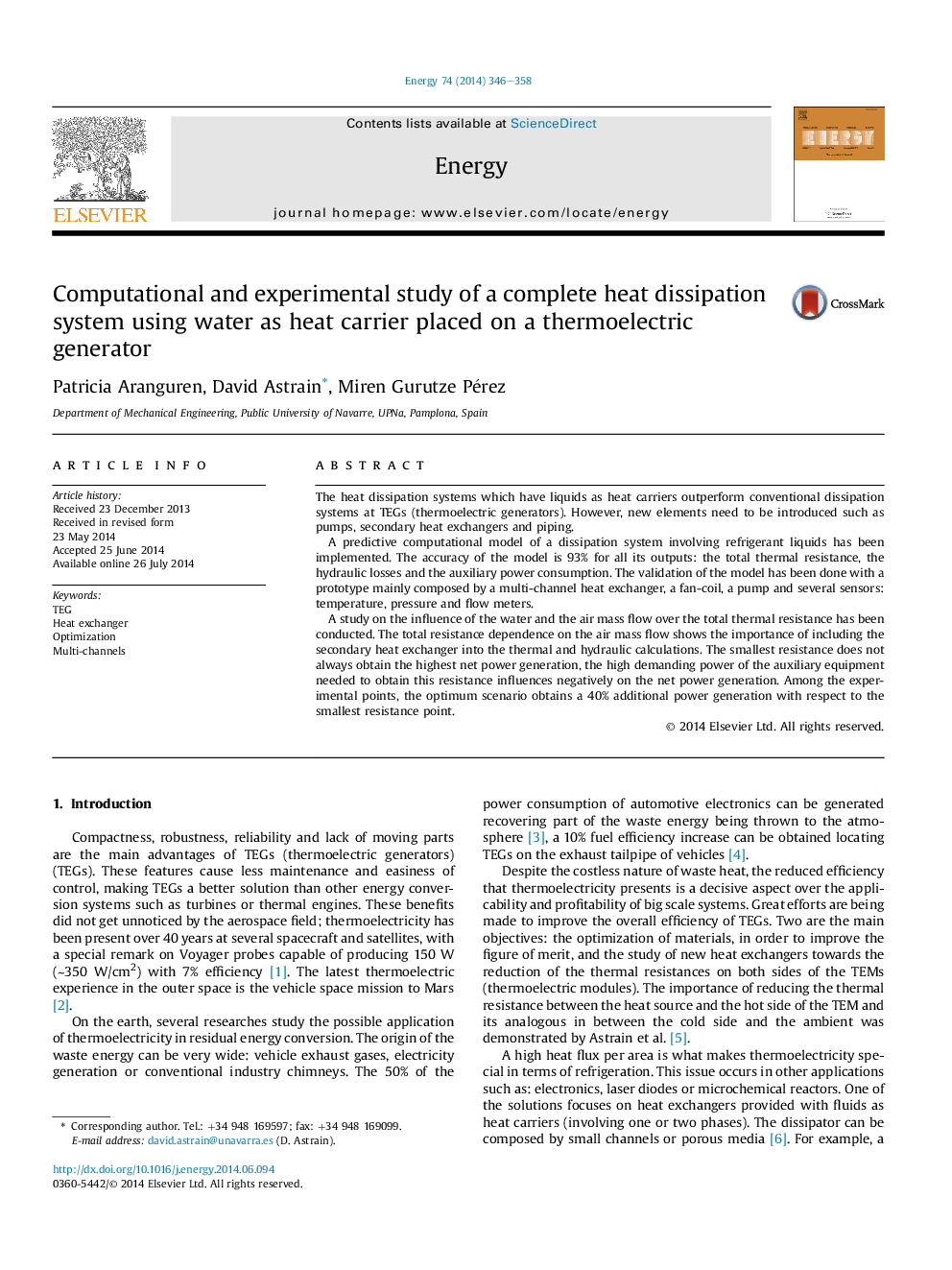| Article ID | Journal | Published Year | Pages | File Type |
|---|---|---|---|---|
| 1732470 | Energy | 2014 | 13 Pages |
•Net thermoelectric generation predictive computational model.•93% model accuracy proven by a prototype experimentation.•Study on the influence of the water and air mass flows on the thermal resistance.•Influence of power consumption of the auxiliary equipment over the net generation.•40% improvement in net generation compared with the smallest thermal resistance.
The heat dissipation systems which have liquids as heat carriers outperform conventional dissipation systems at TEGs (thermoelectric generators). However, new elements need to be introduced such as pumps, secondary heat exchangers and piping.A predictive computational model of a dissipation system involving refrigerant liquids has been implemented. The accuracy of the model is 93% for all its outputs: the total thermal resistance, the hydraulic losses and the auxiliary power consumption. The validation of the model has been done with a prototype mainly composed by a multi-channel heat exchanger, a fan-coil, a pump and several sensors: temperature, pressure and flow meters.A study on the influence of the water and the air mass flow over the total thermal resistance has been conducted. The total resistance dependence on the air mass flow shows the importance of including the secondary heat exchanger into the thermal and hydraulic calculations. The smallest resistance does not always obtain the highest net power generation, the high demanding power of the auxiliary equipment needed to obtain this resistance influences negatively on the net power generation. Among the experimental points, the optimum scenario obtains a 40% additional power generation with respect to the smallest resistance point.
